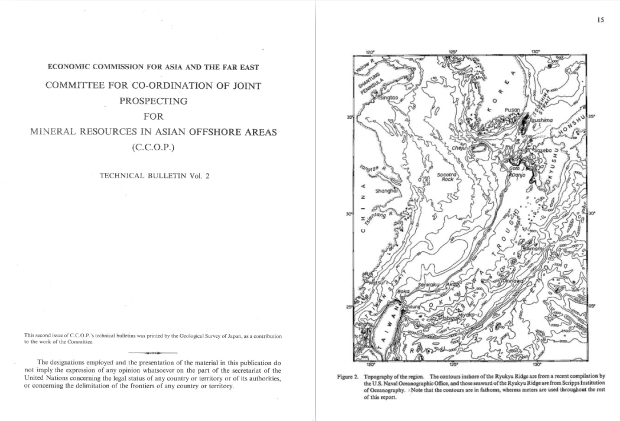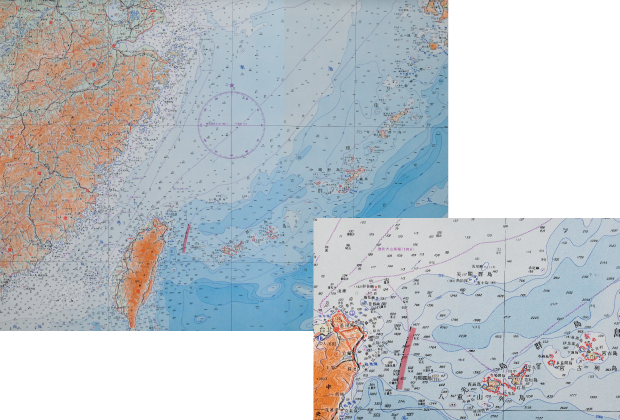In 1969, a UN agency report noted the high likelihood of oil reserves in the East China Sea, including the waters around the Senkaku Islands. This drew attention to the Senkaku Islands, and China and Taiwan suddenly began to claim territorial sovereignty over the islands, which they had never done before.
A map created by the People’s Liberation Army Navy headquarters shows that China recognized the Senkaku Islands’ affiliation to Japan even after World War II.
ECAFE Report, 1969

The ECAFE report pointed out that there is a possibility of oil reserves in the East China Sea, including the area around the Senkaku Islands.
Although the report clearly described the islands as “the Senkaku Islands,” there was no objection from the PRC and Taiwan (May 1969).
Collection of Pacific Ocean Nautical Charts
 From an individual donor.
From an individual donor.
1961, Prepared by the Chinese People’s Liberation Army Navy headquarters
An excerpt from a collection of ocean charts believed to have been compiled and distributed in 1961 by the Chinese People’s Liberation Army Navy headquarters. The national border is drawn between Yonaguni Island and Taiwan, and given that islandsare displayed with names such as the “Senkaku Islands” and “Uotsuri Island,” it would indicate the recognition that the islands belonged to Japan.



